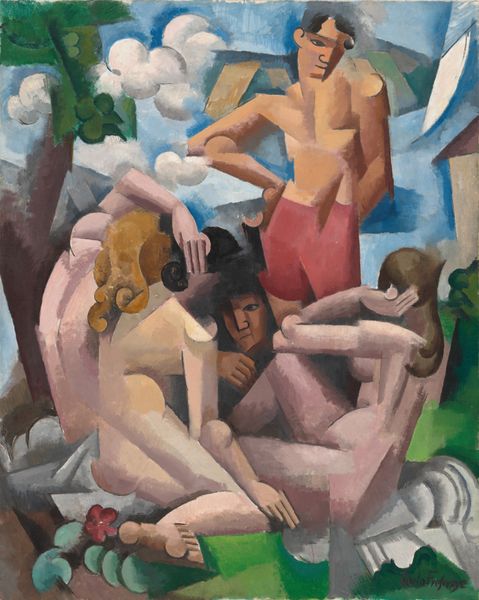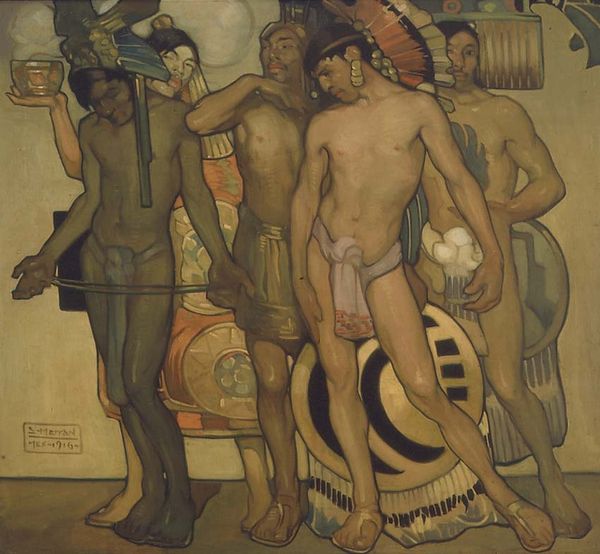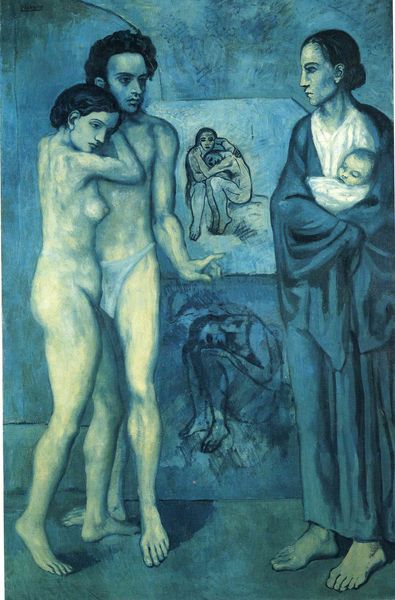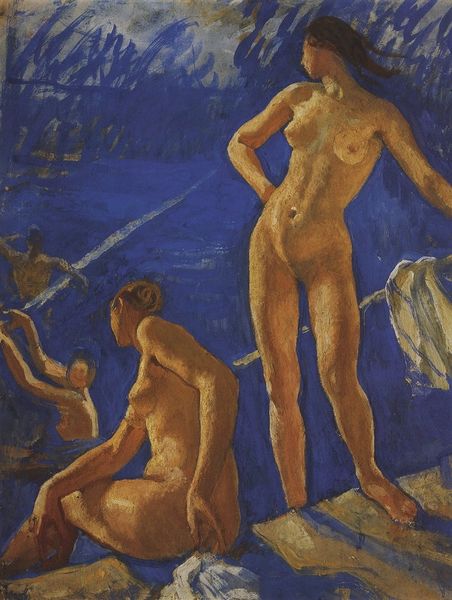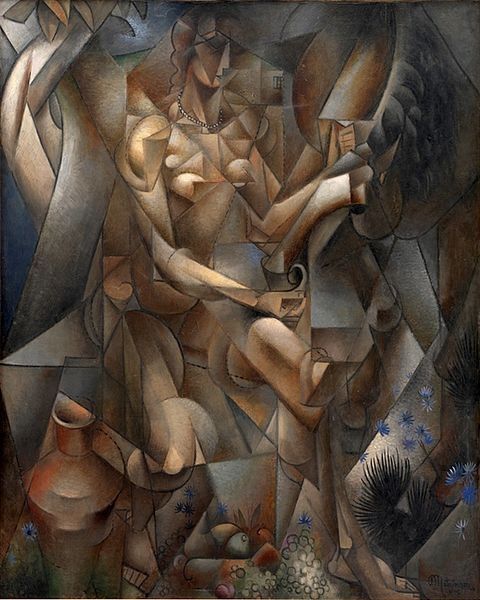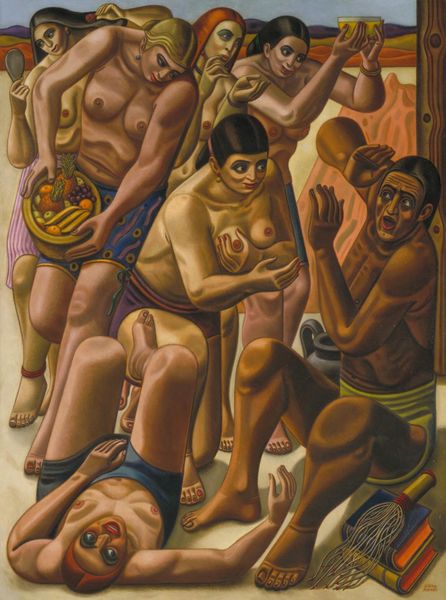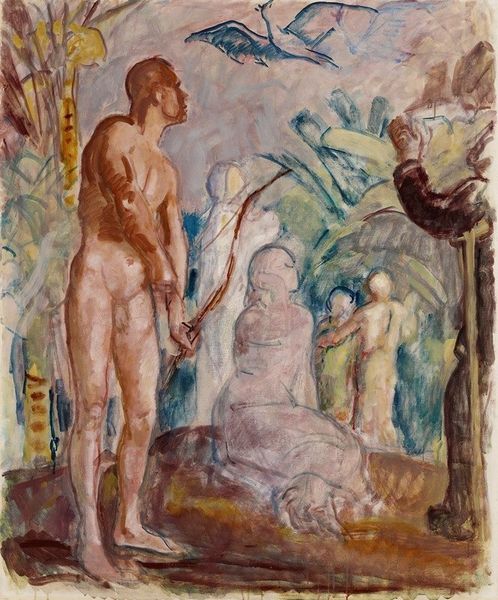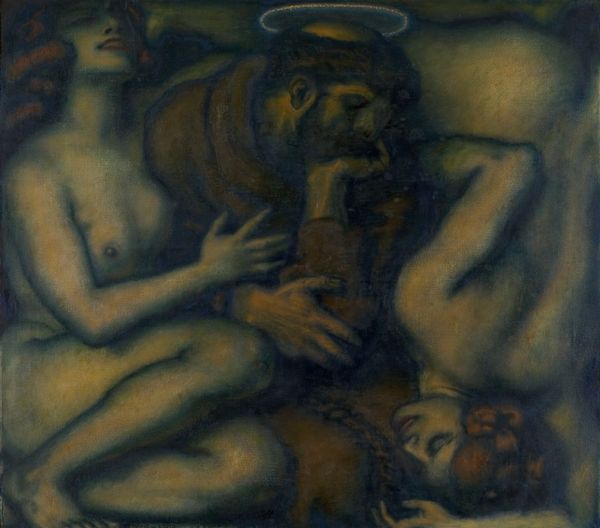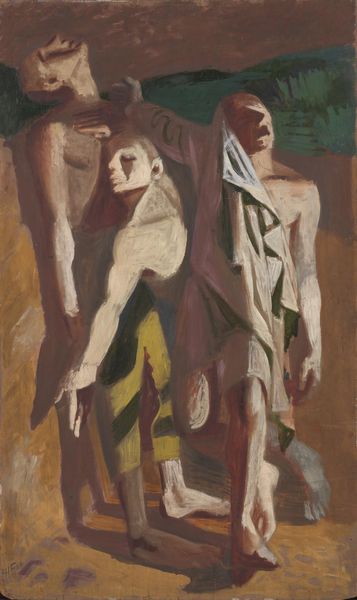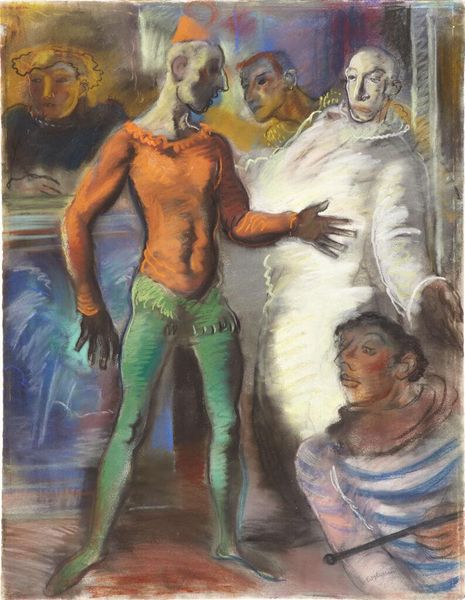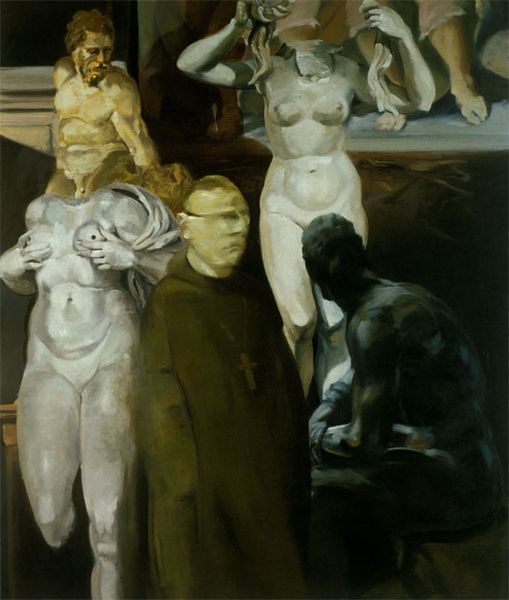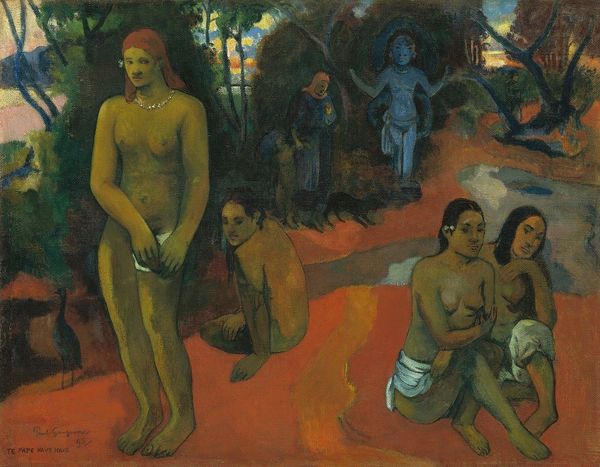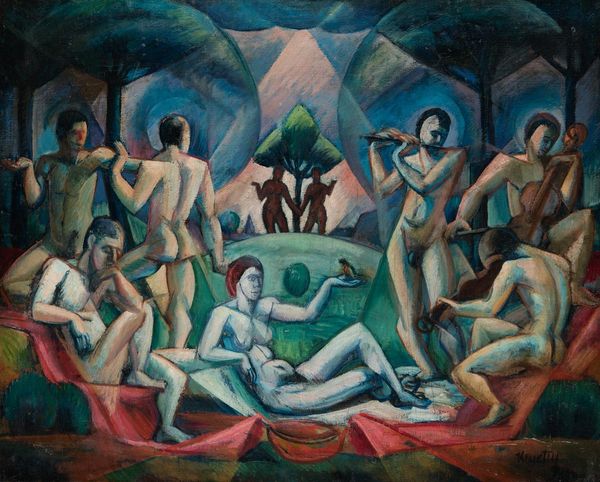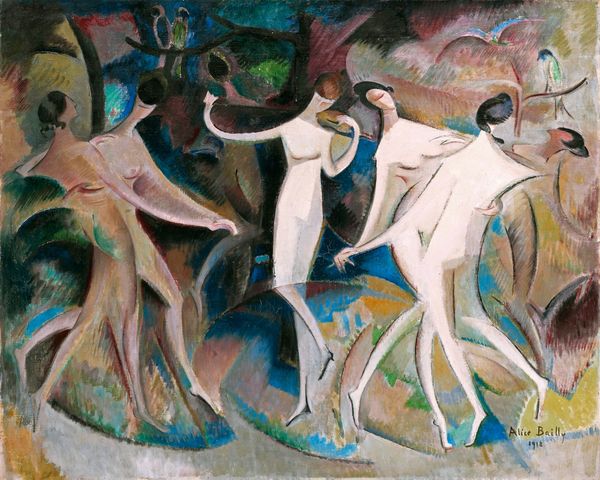
Copyright: Public domain
Curator: Georg Pauli’s 1914 oil painting, “Young Bathers,” presents an intriguing study in form and the male nude, executed with bold impasto. What impressions strike you immediately about this work? Editor: It's giving me strong "classical sculpture meets early modernism" vibes. A bit blocky, and, dare I say, awkward, yet the light! It's like these guys are sculpted from pure sunlight. It makes it compelling, though. Curator: The painting indeed utilizes a palette dominated by warm yellows and ochres to define the figures, contrasting against the cooler blues and greens of the background, adhering loosely to post-impressionist tendencies in figuration. Observe the use of angular planes to construct the bodies—a simplification that hints toward cubist influence. Editor: Angular is the word! It’s like Pauli took classical ideals of the male form and ran them through a polygon filter. I almost wonder if that geometry reflects a certain unease. Or, on the contrary, if he’s creating new archetypes, carving his own personal Pantheon? Curator: One could analyze the composition through the lens of semiotics, interpreting the gestures and arrangements as symbols of idealized masculinity, albeit filtered through Pauli's unique vision. The tension arises from traditional themes conveyed through modernist syntax. Editor: I see that! Especially with that impasto – it almost looks like he's building them out of earth and sun, element by element. You get this profound sense of these bathers having to be more than what is apparent on the surface; it has something primordial that reminds me of earth or clay and water coming to life, even in its awkward glory! Curator: Considering these multifaceted aspects together illuminates the painting's engagement with both classical and contemporary artistic discourse. Thank you. Editor: Thanks. A lot to unpack, a lot to appreciate... in those angles!
Comments
No comments
Be the first to comment and join the conversation on the ultimate creative platform.
